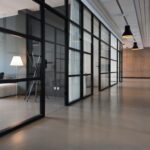For decades, working in an office meant showing up at a designated location where workers were assigned a desk they would sometimes use for years. While older generations considered this an inevitable part of the work world, Millennials and younger generations have balked at the restrictions and demanded more flexible options. They have lobbied for better work-life balance and a more enjoyable environment. Then the 2020 Covid pandemic forced thousands to work from home, and millions have refused to return to traditional offices. As a result, businesses have adopted flexible seating arrangements that offer a solution that works for employers and employees.
Desk Hoteling vs Hot Desking
Flexible seating is focused on creating a working environment that provides freedom and choice. Hot desking and desk hoteling are the two most common flexible seating arrangements.
With hot desking, employees choose chairs, desks, or other options on a first-come-first-served basis. They can opt for private or public areas or select the type of chair, desk, or table they want. But, the arrangement has drawbacks. For example, several workers may want an Integra chair, and all are in use, so employees must take what is available.
Desk hoteling helps solve the problem by allowing workers to use smartphones to make reservations for specific work areas. Employers provide unique software that makes it possible to reserve workstations.
Companies Can Save Money
Flexible seating allows businesses to lower costs by accommodating large workforces in smaller spaces because it isn’t necessary to assign each employee a permanent workstation. Several people may use the same desk and chair each day. Companies avoid the problem of investing in furniture that may not serve their future needs.
Creating a flexible office means there is no underused space. According to Inc., as much as 40% of a typical office’s desk space is unused daily. People go on vacation, call out sick, or work flexible schedules. In a flexible office, work areas are entirely scalable and can change to meet daily demands.
Optimize Office Space
Unlike traditional offices that can feel cramped, spaces with flexible seating arrangements have a minimalist feel. Environments are agile and streamlined to make the most of available space.
Not only is this type of breathable space more efficient, but it is also more pleasant. Without rooms filled with partitions, employees enjoy a sense of freedom and do not sacrifice the ability to collaborate easily.
Increased Employee Autonomy
Employees not anchored to a specific desk enjoy the freedom to navigate their workplace. They have a chance to use all available amenities and operate within the environment.
Entrepreneur magazine says flexible workspaces are elastic, so workers and teams can customize them to suit their needs. This ability to work efficiently with others creates a more collaborative, productive atmosphere.
Reduce Monotony
Flexible workspaces help kill monotony, which is critical to retaining top-notch employees. The Harvard Business Review reports that “monotonous work can negatively impact mental health, cause major stress, and lead to burnout. The chronically bored are at higher risk for drug addiction, alcoholism, and compulsive gambling.”
Flexible offices are hybrids that can include assigned and unassigned desks, standing desks, couches, comfortable chairs, and areas for collaboration. Workers can select whatever suits their needs and comfort level. They may change their seating arrangements constantly or choose a favorite and stick with it.
Traditional offices with fixed seating, cubicles, and assigned desks are rapidly being phased out in favor of offices that offer flexible seating. The option is ideal for today’s modern workers, who expect a pleasant, collaborative work atmosphere. Flexible workspaces let companies maximize their resources while increasing employees’ autonomy. Allowing employees to choose their own working space can eliminate monotony and increase productivity.





